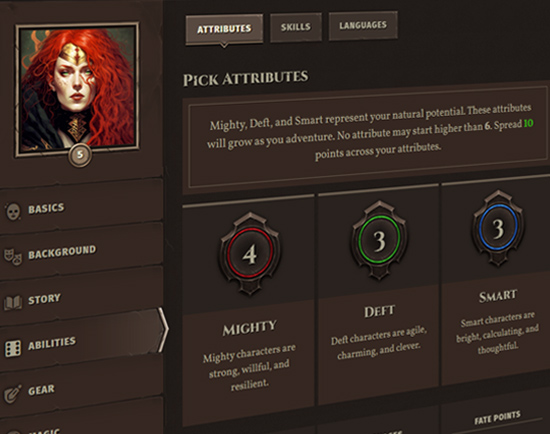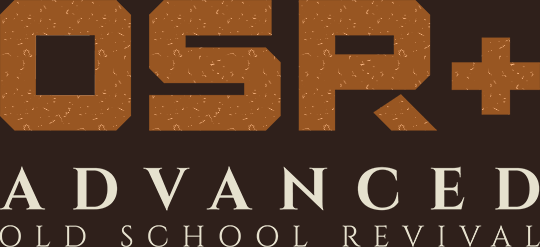Encounter mode in OSR+ is how you handle full-scale combat. When in encounter mode, time slows down into discrete, moment-to-moment action where each player and NPC gets a turn in a round, which is generally equal to one minute of time in the fiction.
Simulation, Not Fairness
Probably the most important thing to remember when running an encounter is that it's not a you vs. them exercise. You are not trying to beat your players at the encounter, nor are you trying to let them win it. As a GM, your goal is to do no more or less than what your NPCs would want to do.
Unapologetically Embody Your NPCs
If the PCs are engaging a wyvern on its home turf in order to steal its egg, and the wyvern is the one who laid that egg, it's very likely the wyvern will do whatever it takes to protect that egg, including hunting them down the mountain and fighting them to the death. On the contrary, if the party is fighting a bunch of bandits who want to steal the party's haul of treasure, all the bandits care about is waylaying the PCs long enough to make off with the treasure. As you choose each PC to attack, don't think about whether Courtney or Jon already got shot at this turn: you have to ask yourself, if the bandits need to take down Courtney to get to that cart, then all of them will shoot at Courtney.
Encounters are about simulation, not fairness. If you always commit to take action in accordance with the NPCs' motivations, you engender trust in the players that you're never picking on them, you're just being faithful to the fiction.
Theater of Mind
While battlemaps in a VTT or on a physical hex map can be used to lay out combat visually, OSR+ is designed for theater of mind play, meaning it should be possible to conduct play with no visual aids, entirely in your imagination. This means the burden is on you to create a persistent visual of the combat through your narration.
In between every round, and in reaction to each player’s action, you want to continually update that visual by describing how the combat evolves with dramatic flair. Not only does this help the players have a clear idea what is happening, but it creates opportunities for the players to interact with the fiction in unexpected ways.
Designing Engaging Encounters
An engaging encounter is one-half NPC strategy and one-half set piece.
When you consider the space in which a combat takes place, it should never be a boring flat plain with nothing in it.
- Consider elevation, difficult terrain, structures, natural and man-made hazards, bystanders, clocks, and weather conditions.
- Consider why the NPCs that the party are engaged with are there, what they want, and what their ideal win condition looks like. NPCs should fight as intelligently as PCs and have a sense of morale that changes as the battle unfolds.
Enshrine a theme at the heart of the combat that unifies all these aspects: for example, if the combat's theme is “a courageous last stand,” you might start the PCs in a poorly defensible position (like a broken tower at the edge of a cliff), establish a clock before reinforcements arrive to help them, have a ridiculous number of combatants assault them by air and by land in hordes, and create weather conditions that threaten visibility. Such conditions set the stage for the nature of the encounter—in this case, to survive long enough rather than prevail—and will require PCs to take advantage of the environment to delay the enemy, rather than rely on their prowess in battle.
Encounter Length
Encounters can take a long time to run because there's a lot to do each time you move the spotlight. Consider that each round, your players may ask you questions about the scene, describe what they're doing when they commit to an action, roll for those actions, and then listen to you narrate the resolution. Even if this only takes a few minutes, that's at least 12 minutes per round if you have four players, and we haven't even added the time it takes for you to have the NPCs do stuff to the PCs on their turns in that same round.
An ideal encounter shouldn't drag on for more than half an hour, so that means if you want to keep an encounter lively and engaging, you've got to limit encounters to 2 or 3 rounds at most, or double that for a narratively significant encounter meant to take an hour or more.
 Archetypes
Archetypes Armor
Armor Classes
Classes Conflicts
Conflicts Cultures
Cultures Ethos
Ethos Flaws
Flaws Glossary
Glossary Kits
Kits Maleficence
Maleficence Origins
Origins Shields
Shields Skills
Skills Spells
Spells Stances
Stances Status Effects
Status Effects Tactics
Tactics Talents
Talents Techniques
Techniques Treasure
Treasure Weapons
Weapons











 Hall of Heroes
Hall of Heroes Hall of Legends
Hall of Legends



 Dungeons & Flagons
Dungeons & Flagons